1965 Austin Mini Cooper 970S
The Mini Cooper 970S was created for 1000c production saloon racing, but this one enjoyed a rock star-studded life in the hands of Humble Pie guitar roadie, John Hammel.
STAR SHIP
Words IVAN OSTROFF
Photography GUS GREGORY
Meet the Mini that ferried guitars and their rock-star owners around in the Seventies
Starship On tour in a rock ‘n’ roll roadie’s much-loved Mini Cooper 970S
December 1971, and John Hammel needed something to replace his 1963 Ford Anglia 105E. ‘I found this 1965 Austin Mini Cooper 970S for sale in Exchange and Mart. It was being sold by a chap in Welwyn in Kent, it had been repainted black over its original Pale Blue but it looked very smart and I just had to buy it. It became my everyday car, I’d cart guitars back and forth for re-stringing or tuning, to and from Jerry Shirley’s house where we used to rehearse. We’d drive in it up to London to the speak-easy and very often down to the local pub.’
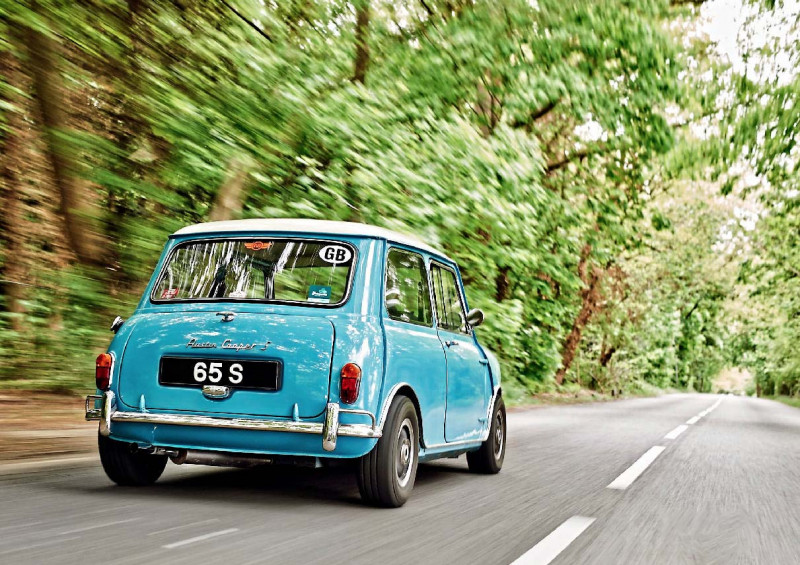
Jerry Shirley was the drummer for rock band Humble Pie, featuring Steve Marriott on guitar and vocals, Peter Frampton on guitar and Greg Ridley on bass. John Hammel was their roadie. ‘We were a very close-knit group,’ he says. ‘I didn’t just restring and tune their guitars, I went everywhere with them and did everything for them.’
‘I didn’t realise its significance at the time as being rare or something special’
Hammel would later join former Beatle Paul McCartney’s Wings, staying there for 41 years, but this car’s story is embedded in that of Humble Pie. ‘I didn’t realise its significance at the time as being rare or something special, but being a Mini Cooper S, it was very cool motor to drive and it gave me street cred, so I really enjoyed my time with it.’
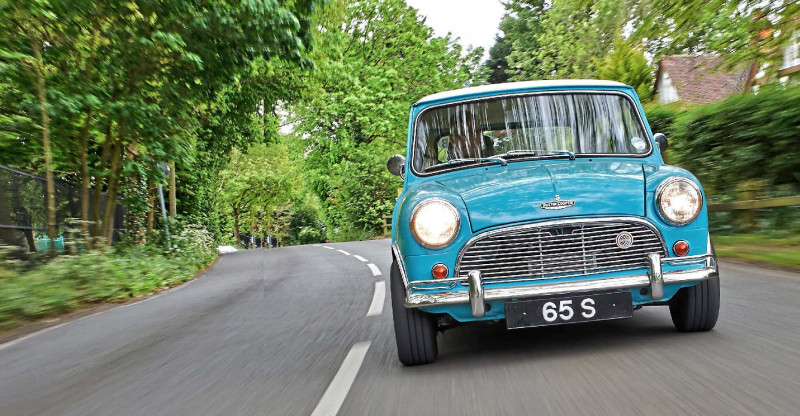
Shirley and Hammel were the two Humble Pie bachelors who used to hang out together. Recalls Shirley, ‘We often went to the local pub or up to London to the speakeasy or La Chasse Club in Wardour Street together in the 970S. Of course this is 50 years ago now but I remember driving it on occasions, even though at that time I only had a provisional licence. I did have guys who would drive me but sometimes I was a naughty boy. If I was recording at Trident Studio in Soho, I had to get up to London from Broxbourne so I occasionally drove myself but, if we had drink breaks at the speakeasy or La Chasse Club, John Hammel would drive me in the 970S.’
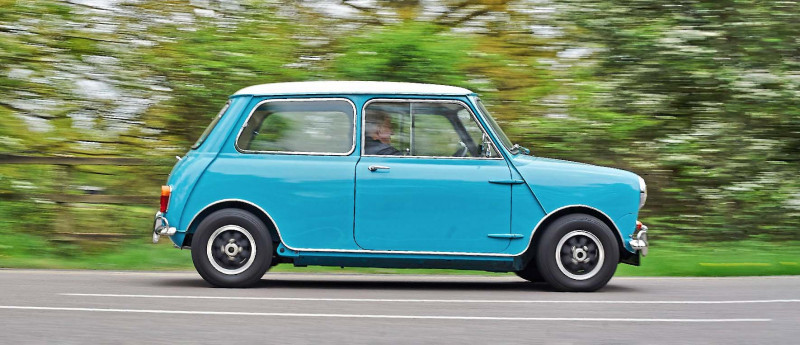
Jerry Shirley remembers Hammel driving to the Olympic Studios in Barnes when Humble Pie was recording the Smokin’ album. ‘I had a beautiful Gibson J-200 acoustic guitar that was damaged by the airlines during transit. I remember him picking it up from Green Farm, my house in Stebbing in Essex. A short time later, he was back in the 970S with the Gibson looking better than when I first bought it.’
Marriott, Hammel and Shirley used to go to football together in the Mini, ‘We used to play against Pink Floyd, The Average White Band and The Sutherland Brothers & Quiver – we beat them 9-0. When we were at Steve Mariott’s house, we used to take it down to the pub at Moreton, or to my local at Stebbing.’ On one occasion, Hammel remembers driving along the lane to the studio at Steve Marriott’s house near Ongar when he collided with a petrol tanker coming the other way. Steve and his wife heard the bang and rushed outside dragging him out of the car as quick as they could in case the whole thing went up in flames. ‘I damaged my leg against the parcel tray and I still suffer with my knee from that accident to this day.’
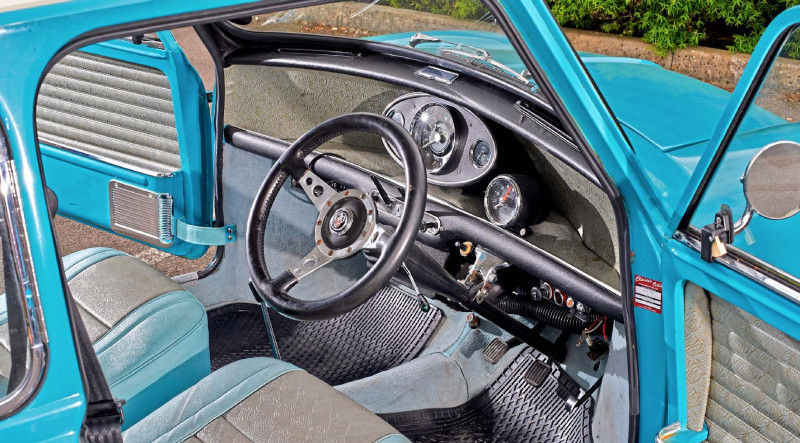
Despite that incident, Shirley rated Hammel’s driving, ‘He was quick but always safe, though after the accident, Humble Pie decided that he should have something bigger and safer, so they bought him a new BMW 2500. The damaged 970S was sold on.’ Austin built just 972 Cooper 970Ss between March 1964 and January 1965 as a limited production homologation special eligible for the under-1000cc class in international motor sport. With a 70.64mm bore combined with a short 61.91mm stroke, the ‘970 S-type’, to give it its factory designation, was a meagre 65bhp at 6500rpm with 55lb ft of torque at 3500rpm.
‘Humble Pie decided Hammel should have something bigger and safer – a BMW 2500
Such a specialist engine was pricey to build, so BMC made it a special-order model; and few were sold. The rest of the mechanical specification was the same as the 1071S. Hydrolastic suspension replaced rubber cones three months after launch and the model only lasted a further seven months further.
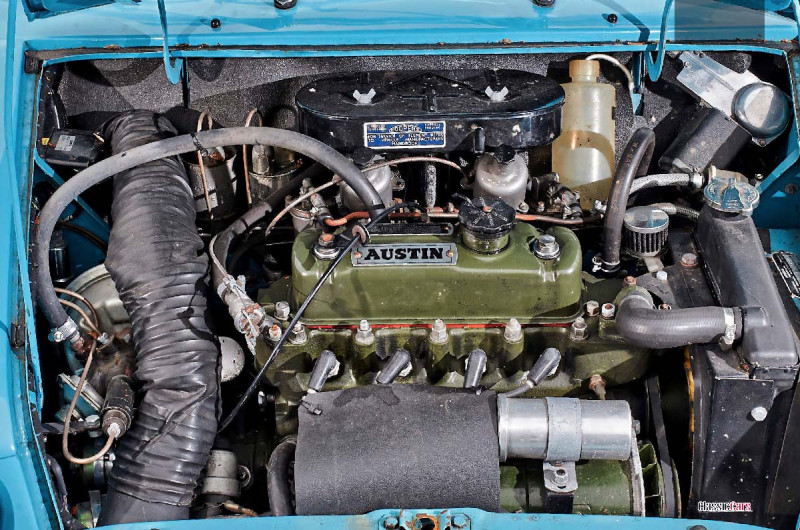
But it worked, the model enjoying class successes in rallying and on the racetrack – well before the official production date, a 970S driven by Logan Morrison and Ross Finlay won its class and finished 19th overall in the 1963 RAC Rally. In August 1966, Tony Fall won the Polish Rally in one, beating Timo Mäkinen’s 1275cc Mini in the process. On track, a Cooper 970S campaigned by John Hanley, equipped with a 999cc engine, achieved more points than any of his rivals. For some time however, the Cooper 970S was overlooked, perhaps because of its relatively low power profile. According to marque authorities, approximately 200 survive with just 40 still in use.
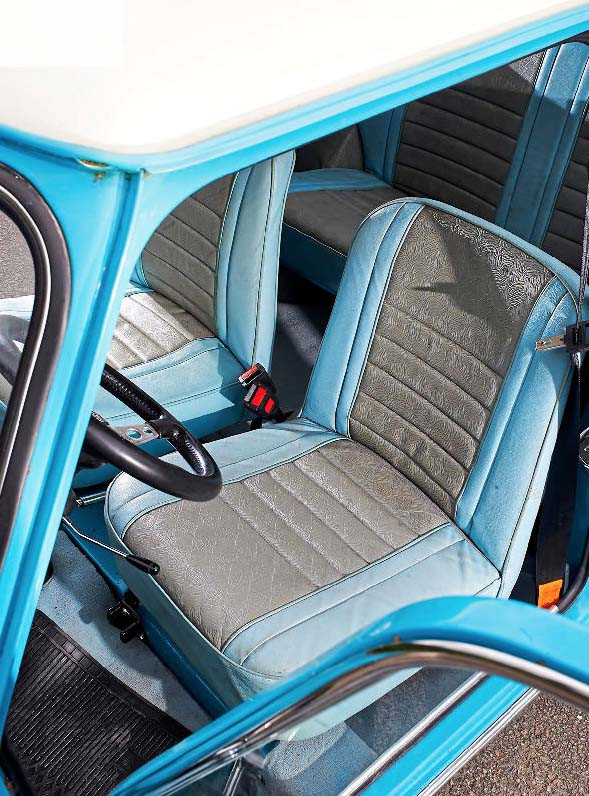
All this is swirling in my head as I approach the car, now owned by Radford Mini specialist Steve Burkinshaw. At first glance, it appears exactly as it left the factory – the exterior is back in Surf Blue with an Old English White roof, the seats trimmed in Gold Brocade. However, the original 15óin Bakelite steering wheel has been replaced with a period-correct 14in Moto-Lita. The column has also been dropped an inch so that the wheel sits two inches lower and at more of an angle. It’s more ergonomic than the usual Mini bolt-upright bus driver pose. The tuned Cooper 1275cc A series engine it now runs starts instantly and ticks over at around 950rpm with the whole chassis reverberating eagerly. Considering the close proximity of the engine to the bulkhead, combined with myriad transfer gears spinning within, it is hardly surprising. As I blip the throttle the vibration lightens a tad, but there’s lots of resonance accompanied by a harsh bellow from the exhaust.
Pulling away, I dip the light clutch, flick the stubby gear lever back into second and floor the throttle. Accelerate hard and there’s an instant of torque steer, but traction is good with little wheelspin. Slowing down through town, the engine pulls impressively well from around 1400rpm in third gear. In top it seems happiest pulling from 1500rpm, which at 25.71mph per 1000rpm in equates to around 38mph.
Dropping from third to second, the synchromesh is slow and baulky, but pedals are placed perfectly and the close ratios in the gearbox are ideally spaced – jumping around the ’box responds well to double de-clutching. Tractability in all gears and the torque makes the car amazing fun to drive but I could imagine that deeply resonant exhaust note bringing on one heck of a headache if I were driving it all day long. You can feel the exhaust vibration through the seat as you sit still at 950rpm. Batting along at 60mph, B-road ride from the rubber cone suspension is choppy, though Steve thinks some of that is exacerbated by the seat cushion diaphragms. He replaced the cones four years ago, at the same time fitting adjustable Spax dampers and Hi-Lo suspension. It uses an adapter so that the cones can be pressed or expanded to adjust height. There’s little roll through corners and overall the handling is superb.
Cornering power is astonishing and you can turn in at ridiculous speeds, but if you need to lose speed first, the brakes are progressive and effective, with no grabbing or tendency to lock up. Approaching a sharp S-bend at what feels like suicidal speed, I simply stab the pedal, slip down into third gear, turn sharply into the right hander, lift for an instant to encourage the rear end around, flick left as I enter the second turn and the front tyres may scrabble and squeal, but they hang on to the tarmac and we’re out the other side, pilot grinning madly. All the while you feel confident the front tyres won’t break away or the rears slither into oversteer. It all adds up to this feeling like an invincible cornering machine.
When current owner Steve Burkinshaw bought the car in 1977, the car still bore its fuel tanker-imposed damage, ‘Using a Porta-Power hydraulic unit, I managed to get the car back into shape. Otherwise, the body shell was quite sound. The front subframe was damaged beyond saving – that had taken the bulk of the crash damage – so I straightened the offside front inner wing, fitted two new front wings, a rear valance, replaced both sills and also the A-panels. The Radford doors that John Hammel fitted were replaced with correct original factory items, but the original Gold Brocade rear seats survived.’
Although a 970S might not be the most powerful of the various Mini Coopers, its scarcity and place in Mini lore makes it special enough. Layer in the colourful rock ‘n’ roll chapter of its life, and Burkinshaw’s example has plenty to make me smile – and that’s before I tip this 57-year-old tarmacleech into the next bend.
TECHNICAL DATA 1965 Austin Mini Cooper 970S
- Engine 1320cc transverse-mounted straightfour, ohv, twin 1ó inch SU carburettors
- Max Power 92bhp @ 6000rpm
- Max Torque 88lb ft @ 3300rpm
- Transmission Four-speed manual, front-wheel drive
- Steering Rack & pinion
- Suspension Front and rear: Rubber cones, Hi-Lo suspension, adjustable Spax dampers
- Brakes Front: discs. Rear: drums
- Weight 625kg
- Performance Top speed: 95mph
- 0-60mph: 10.5sec
- Cost new £671 incl paint (Aug 1964)
- Classic Cars Price Guide £21,000-£42,500
Despite its rarity, the 970S has never been mollycoddled. Power now comes from a 1275 engine rebored to 1320cc. Front-end damage from Hammel’s crash eradicated Factory spec includes Powder Blue Gold Brocade seats.
OWNING A MINI 970S
The first big trip Steve Burkinshaw did with the car was to the International Mini Meeting at Mugello in Italy, ‘It had overheating problems until we reached the town of Vienne where Mini specialist BMC Automobile fitted a large-core radiator. Since then I’ve been around Ireland and Scotland a couple of times and also did the Minis to Monte run. The following September we drove again with the Mini Cooper Register to Monte Carlo, retracing some roads and rally stages from the old days, a 2400-mile round trip. Unfortunately, oil vapour was covering the engine because I’d attached the Austin rocker cover badge with ordinary pop rivets which allowed the oil to escape. That rather small engine was working hard, so I fitted a 1275cc, stripped, re-bored to 1320cc, lightened and balanced. I fitted 1½ inch SU carbs and a longer legged 3.1:1 differential, and the full close-ratio all-synchromesh gearbox as fitted to later Cooper S Minis. I know the 970S is rare but I am not too precious, I enjoy driving it. It’s uncomplicated and so reliable. In the summer, it’s my everyday car.’
Mini streetcred topped Hammel’s 1971 priority list Steering now via period-correct Moto-Lita and dropped column



What a bizarre second part to this article. The whole point of the 970 S was it’s over square high revving engine. The car driven and referred to as a 970S is nothing of the sort as it has the conventional long stroke 1275 engine bored out to be even bigger. If you set out to test a 970S you really should test a car with a 970 engine, that’s a basic requirement. All this is is a test of an old Mini with a colourful past, a mis-packaged journalistic hoax. No more than click bait.